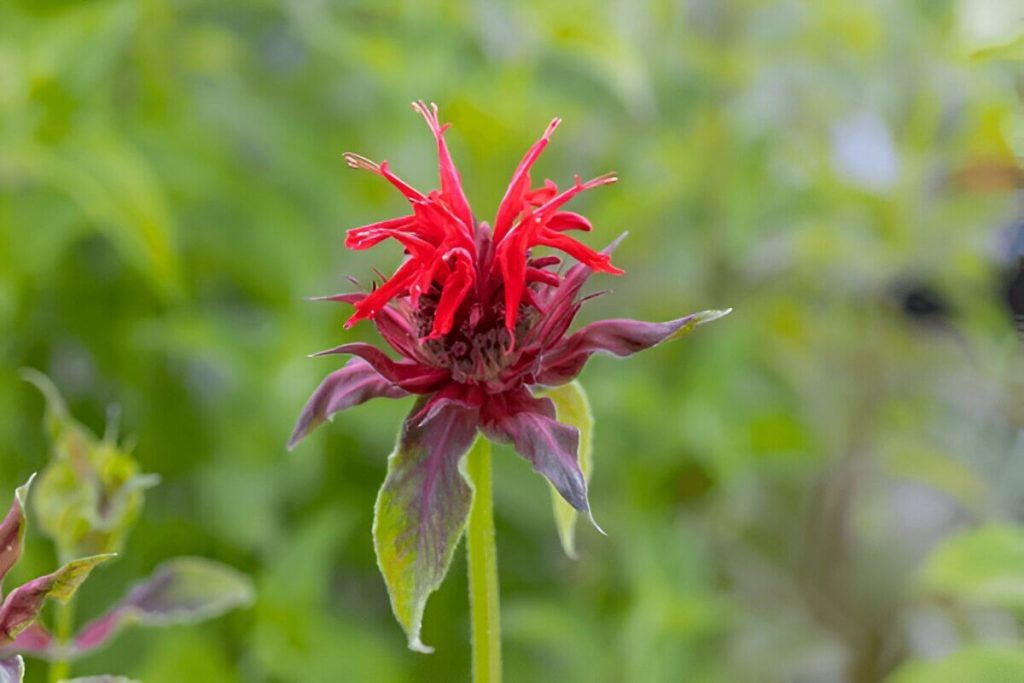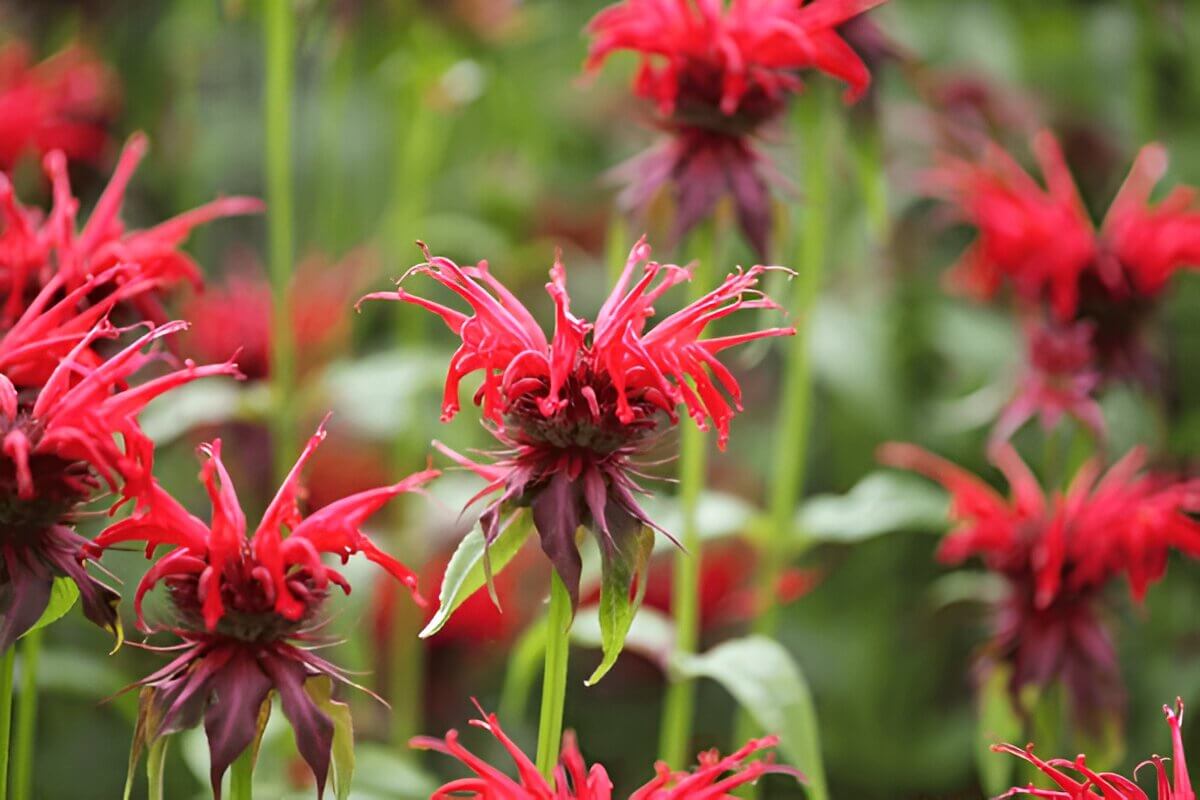Bee balm, scientifically known as Monarda, is a captivating perennial that brings both beauty and utility to any garden. Known for its vibrant blooms and aromatic foliage, the bee balm plant is a favorite among gardeners who appreciate its dual role as an ornamental flower and a beneficial herb.
As a member of the mint family, bee balm boasts an array of colorful flowers ranging from red and pink to purple and white. These striking blooms not only add visual interest but also attract a variety of pollinators, including bees, butterflies, and hummingbirds. This makes bee balm an excellent choice for those looking to enhance their garden’s ecological health.
Beyond its aesthetic appeal, bee balm offers several practical uses. Traditionally used in herbal medicine, it has been valued for its antiseptic properties and soothing effects on the digestive system. The leaves can be brewed into a flavorful tea or used as a seasoning in culinary dishes.
Incorporating bee balm into your garden not only enriches your landscape with perennial flowers but also provides numerous benefits that extend beyond mere decoration. Whether you’re interested in supporting local wildlife or exploring its herbal applications, bee balm is a versatile addition that promises both beauty and functionality.
Selecting the Right Location and Soil for Growing Bee Balm
When it comes to cultivating bee balm, selecting the right location and soil is crucial for ensuring robust growth and vibrant blooms. Understanding bee balm sunlight requirements is the first step in choosing the perfect spot. Bee balm thrives in full sun, which means it needs at least six hours of direct sunlight each day. However, in regions with particularly hot summers, providing some afternoon shade can help prevent scorching.
Once you’ve identified a sunny location, it’s time to focus on soil preparation for bee balm. This plant prefers rich, well-drained soil that retains moisture without becoming waterlogged. Before planting, enrich your garden bed with organic matter such as compost or well-rotted manure to enhance soil fertility and drainage capabilities.
Knowing where to plant bee balm also involves considering its ideal conditions for growth. Bee balm does best in areas with good air circulation to reduce the risk of powdery mildew, a common issue with this species. Furthermore, spacing plants about 18-24 inches apart will ensure they have ample room to grow while maintaining healthy airflow.
By carefully selecting a sunny location and preparing nutrient-rich soil, gardeners can create ideal conditions for bee balm growth that will lead to a thriving garden filled with beautiful blooms and buzzing pollinators.
Step-by-Step Guide to Planting Bee Balm in Your Garden

Planting bee balm in your garden is a rewarding endeavor that not only adds vibrant color but also attracts pollinators such as bees and butterflies. Whether you’re starting from seeds or cuttings, here’s a step-by-step guide to help you successfully plant bee balm.
How to Plant Bee Balm Seeds
- Choose the Right Location: Bee balm thrives in full sun to partial shade with well-drained soil. Ensure your chosen spot receives at least six hours of sunlight daily.
- Prepare the Soil: Loosen the soil using a garden fork or tiller, and mix in some compost to enhance drainage and fertility.
- Sow the Seeds: Scatter bee balm seeds on the surface of the prepared soil, as they require light for germination. Gently press them into the soil without covering them completely.
- Water Gently: Use a fine spray nozzle to water the area lightly, ensuring that you do not wash away the seeds.
- Maintain Moisture: Keep the soil consistently moist until germination occurs, which typically takes 10-21 days.
Planting Bee Balm from Cuttings
- Select Healthy Cuttings: Choose non-flowering stems about 4-6 inches long from an established bee balm plant.
- Prep Your Cuttings: Remove leaves from the lower half of each cutting and dip them in rooting hormone for better results.
- Plant Your Cuttings: Insert each cutting into a pot filled with moist potting mix or directly into your garden bed if conditions are right.
- Ensure Proper Spacing for Bee Balm Plants: Space cuttings about 18-24 inches apart to allow room for growth and air circulation, which helps prevent mildew issues common with bee balm plants.
- Care for Your New Plants: Water regularly but avoid overwatering; once roots establish, new growth should appear within weeks.
Planting Tips for Beginners
– Start planting in early spring after any danger of frost has passed.
– Mulch around plants to retain moisture and suppress weeds.
– Deadhead spent flowers throughout blooming season to encourage more blooms.
By following these steps, even beginner gardeners can enjoy beautiful bee balm flourishing in their gardens while supporting local wildlife ecosystems!
Watering and Fertilizing Tips to Keep Your Bee Balm Healthy
To keep your bee balm (Monarda) thriving, understanding its watering and fertilizing needs is essential. Establishing a consistent watering schedule for bee balm is crucial, especially during the growing season. These plants prefer evenly moist soil but are relatively drought-tolerant once established. Aim to water deeply once a week, allowing the top inch of soil to dry out between waterings to prevent root rot.
Fertilizing bee balm plants is another key aspect of their care. Bee balm benefits from feeding in early spring as new growth begins. Focus on meeting the nutrient needs of Monarda by using a balanced organic fertilizer that supports healthy foliage and vibrant blooms. Organic fertilizers for perennials, such as compost or well-rotted manure, are excellent choices as they provide slow-release nutrients that improve soil structure over time.
Incorporating these practices into your gardening routine will ensure that your bee balm remains healthy and continues to attract pollinators with its stunning flowers throughout the season.
Pest and Disease Management in Bee Balm Plants
Bee balm plants, known for their vibrant blooms and aromatic foliage, are a delightful addition to any garden. However, like all perennials, they can fall prey to various pests and diseases. Understanding common pests affecting bee balm is crucial for maintaining their health and beauty.
One of the most prevalent issues in bee balm plants is powdery mildew, a fungal disease that coats leaves with a white powdery substance. Treating powdery mildew on Monarda (the scientific name for bee balm) involves ensuring good air circulation around the plants and avoiding overhead watering. Fungicidal sprays specifically designed for powdery mildew can also be effective if applied early in the disease’s development.
In terms of pest control solutions for perennials like bee balm, gardeners should be vigilant about aphids and spider mites. These tiny insects can cause significant damage by sucking sap from the plant’s tissues, leading to weakened growth and distorted leaves. Regularly inspecting your plants and using insecticidal soap or neem oil can help manage these pests effectively without harming beneficial insects.
By staying informed about these common challenges and implementing proactive pest control measures, gardeners can ensure their bee balm plants thrive throughout the growing season.
The Importance of Pruning and Deadheading in Maintaining Vigorous Growth
Pruning and deadheading are essential gardening practices that significantly contribute to the health and vitality of your plants, particularly perennials like bee balm. Understanding how to prune bee balm plants effectively can lead to a more robust growth pattern and an abundance of vibrant blooms. Pruning involves selectively removing parts of the plant, such as spent flowers or overgrown stems, to encourage new growth and prevent disease.
Deadheading, on the other hand, is a specific type of pruning focused on removing faded or dead flowers. This technique not only improves the plant’s appearance but also redirects energy from seed production back into producing more blooms. For bee balm and similar perennials, regular deadheading can result in a longer flowering season with more prolific blossoms.
To maintain healthy growth in perennials, it’s crucial to implement these techniques at the right time and with the appropriate tools. Begin by using clean, sharp shears for precise cuts that minimize damage to the plant. Regularly inspect your plants throughout the growing season for any signs of spent blooms or overcrowded stems needing attention.
By incorporating these practices into your gardening routine, you ensure that your perennial garden remains lush and thriving year after year. With proper care through pruning and deadheading techniques for more blooms, you’ll enjoy a garden that’s not only beautiful but also resilient against pests and diseases.
Aesthetic Uses of Bee Balm in Landscaping and Companion Planting Ideas
Bee balm, also known by its scientific name Monarda, offers a vibrant splash of color and a myriad of design possibilities in landscaping. These striking flowers are not just visually appealing; they play a significant role in enhancing the aesthetic and functional aspects of garden spaces. When considering design ideas with Monarda flowers, their rich hues ranging from deep reds to soft pinks and purples make them perfect for creating colorful garden displays that captivate the eye.
Incorporating bee balm into your landscape can be as simple as using them as focal points within flower beds or borders. Their tall, sturdy stems and bold blooms make them ideal for adding height and texture to any arrangement. For those looking to create dynamic visual interest, consider planting bee balm alongside other perennials like coneflowers or black-eyed Susans. The complementary colors and varied bloom times ensure a continuous display throughout the growing season.
Beyond aesthetics, bee balm serves an important role in companion planting. It attracts beneficial pollinators such as bees, butterflies, and hummingbirds, which can enhance the health and productivity of surrounding plants. Companion plants that benefit from growing with Monarda include tomatoes and peppers; these vegetables thrive when pollinator activity is high. Moreover, the aromatic foliage of bee balm can help deter pests naturally, making it an excellent addition to organic gardens.
In summary, integrating bee balm into your landscaping not only enhances visual appeal but also supports ecological balance through strategic companion planting. Whether you’re aiming for a lush cottage garden look or seeking practical benefits for your vegetable patch, Monarda is a versatile choice that brings both beauty and utility to your outdoor space.
Final Thoughts on Growing & Caring For Your Own Bed Of Vibrant Bee Balm Flowers
As we conclude our exploration of growing and caring for bee balm flowers, it’s clear that these vibrant blooms offer more than just aesthetic appeal. By cultivating a bed of bee balm, you’re not only enhancing your garden’s beauty but also playing a crucial role in supporting pollinators like bees, butterflies, and hummingbirds. These beneficial creatures are essential for the health of our ecosystems and the production of many crops.
To ensure your bee balm thrives, remember to plant them in well-drained soil with ample sunlight. Regular watering and occasional pruning will keep your plants healthy and encourage abundant flowering. As you enjoy the colorful display they bring to your garden, take pride in knowing that you’re contributing to a larger environmental cause.
Ultimately, growing bee balm is about creating harmony between nature’s needs and our desire for beautiful surroundings. By making informed choices about plant care and supporting pollinator populations, you can cultivate a garden that’s both stunning and sustainable. Embrace this opportunity to enjoy the blooms while nurturing the vital relationships within our natural world.
